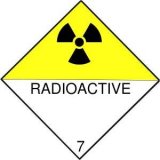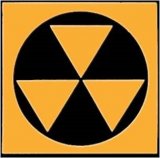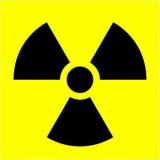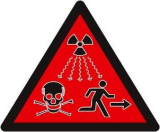RadTown Radiation Protection: Teacher Information
Ionizing radiation is all around us and we cannot avoid exposure to naturally occurring (background) forms of ionizing radiation. Controlled radiation sources, like those used in the irradiation process, tritium exit signs, or ionizing smoke detectors, can even protect us. We also benefit from radiation that is used in medicine, nuclear power generation, construction, and other industrial processes. People who work with radiation sources must follow radiation protection practices.
The public should also be aware of radiation protection principles and where they can be used to limit exposure to radiation. The three basic radiation protection concepts are time, distance and shielding.
- Background Information for Teachers
- Target Audience and Activity Topics
- Activity Times
- Next Generation Science Standards
- Common Core State Standards
- Additional Resources
Background Information for Teachers
When radioactive atoms decay, they give off energy in the form of ionizing radiation (alpha particles, beta particles or gamma rays). The energy is called ionizing radiation because as this radiation moves through matter it has enough energy to knock tightly bound electrons from atoms. This causes the atom to become a charged ion. Radioactive atoms continue to decay (some for seconds or days, others for thousands of years) until they give off enough energy to become stable atoms and no longer emit ionizing radiation.
If ionizing radiation is absorbed by the body, the effects can potentially damage living cells and the DNA of these cells. Our bodies can handle some degree of exposure to ionizing radiation and still repair damaged cells. This is because humans have evolved in the presence of radiation. The effects of ionizing radiation may vary from person to person based on the total amount of energy absorbed, the time period and dose rate of the exposure, and the particular organs exposed. Dose refers to the quantity of energy absorbed by a person exposed to radiation and in the United States it is measured in millirem (mrem) or rem (Roentgen Equivalent Man). A person’s risk generally increases with the amount of exposure.
Time, Distance and Shielding
People may be exposed to an increased radiation dose in certain situations (for example, when receiving a medical radiation treatment or during a radiological emergency). The concepts of time, distance and shielding are used to help limit radiation exposure. These radiation protection concepts can be applied separately or in combination. For example, people who work with radioactive materials may have time limits on how long they can be near a source which are set according to the exposure risk and shielding requirements such as wearing protective clothing or working behind a barrier.
Time: The dose of radiation you receive depends on how long you are near a radiation source. Setting time limits helps keep the time spent near a source of radiation as short as possible. For example, a worker may only be allowed to work around radioactive materials for 4 to 6 hours of an 8-hour shift.
Distance: The radiation dose you receive strongly depends on how close you are to a radioactive source. For example, barrels of radioactive waste might emit or give off a dose of 20 millirem (mrem) per hour at a distance of 1 foot from the surface. At 5 feet away, the dose rate would be less than 1 mrem per hour. As you distance yourself from the radiation source, you increase the likelihood that some radiation will lose its energy. As a rule, as you double the distance from the radiation source, you reduce the exposure by a factor of four. Conversely, decreasing the distance by half increases the exposure by a factor of four.
Shielding: Placing some material or a barrier, called shielding, between a person and a radiation source is another way to minimize the amount of radiation exposure. The image below shows the penetrating power of ionizing radiation (far right) and potential methods of shielding against alpha particles, beta particles, gamma rays and x-rays (center).
Radiation Warning Symbols
The international symbol of radiation, called a “tri-foil,” or “trefoil,” is used to identify areas restricted because of the presence of radiation. This symbol is displayed where radioactive materials are handled or where radiation-producing equipment is used. The trefoil symbol is often displayed with a message about the nature of the radiation hazard so authorized people can take the appropriate radiation protection precautions before entering the restricted area.
Believing the trefoil symbol was not intuitive, the United Nations introduced a new international radiation symbol in 2007. Both symbols are meant to identify an ionizing radiation source and alert people of the potential dangers, so they can take action to protect themselves against radiation exposure. The new international symbol indicates to the public the importance of moving away from the source.

The hazardous materials, or HAZMAT, placard for radioactive materials must be displayed on packages, cargo units and transport vehicles when radioactive materials are transported by road, air, rail or water. Carriers are responsible for handling and storing these materials properly to prevent the release of radioactive materials. If an accident should occur during transport, the radioactive placard identifies the radiation source. First Responders can use this information to assess and respond to the situation appropriately.

Individuals and communities began thinking about fallout shelters in the late 1940s and early 1950s. In the early 1960s fallout shelters became part of a comprehensive Defense Civil Preparedness Agency (DCPA) program created to prepare U.S. citizens in the event of a nuclear attack. The fallout shelter sign is displayed on the outside of some buildings (e.g., schools or other public buildings) so the public can locate them in the event of an emergency. The symbol may also be displayed inside buildings to mark access routes to the shelter area.
In 1979, the Federal Emergency Management Agency (FEMA) took over the DCPA responsibilities. FEMA is still involved in disaster and emergency response along with state and local governments and other federal agencies, including the Environmental Protection Agency (EPA).
Target Audience and Activity Topics
The Radiation Protection activities introduce middle and high school students to the history of radiation protection, the concepts and devices used in radiation protection, careers and laws related to radiation protection, and radiological emergency planning and response. Students will learn about events that led to the development of radiation protection practices. They will gain an understanding of the radiation protection concepts of time, distance and shielding and an understanding of the devices people can use to detect radiatio. Students will become familiar with the warning signs that may alert us and others to the presence of radiation.
NOTE: The term “radiation” used in the activities generally refers to ionizing radiation unless otherwise indicated.
Activity Times
All EPA RadTown classroom materials can be used individually or modified and combined to create multiple lessons. Activity options allow you to customize the activities to fit the time you have available (e.g., 1–2 class periods) and meet the needs and interests of your students. The time needed to complete activities is between 45-60 minutes, not including optional activities or extensions.
Next Generation Science Standards
The concepts within these activity sets can be used to support the following science standards:
- PS4. Waves and Electromagnetic Radiation
- ESS3. Human Impact
Common Core State Standards (CCSS)
The concepts in the Vocabulary Activities align with the following:
- CCSS English Language Arts Standards for Literacy in History/Social Studies, Science, & Technical Subjects
- CCSS.ELA-LITERACY.L.6-12.6
- CCSS.ELA-LITERACY.RST.6-12.2 Key Ideas and Details
- CCSS.ELA-LITERACY.RST.6-12. Craft and Structure
- CCSS.ELA-LITERACY.L.6-12.6 Vocabulary Acquisition and Use
The concepts in the History of Radiation Protection activity align with the following:
- CCSS English Language Arts Standards for Literacy in History/Social Studies, Science, & Technical Subjects
- Comprehension and Collaboration: CCSS.ELA-LITERACY.SL.6-12.1
- Integration of Knowledge and Ideas: CCSS.ELA-LITERACY.RST.6-12.7
- Research to Build and Present Knowledge: CCSS.ELA-LITERACY.WHST.6-12.9
- CCSS Mathematics Standards
- CCSS.MATH.PRACTICE.MP4
- CCSS.MATH.CONTENT.6.NS.C.7
- CCSS.MATH.CONTENT.6.SP.B.4
- CCSS.MATH.CONTENT.HSS.ID.A.1
The concepts in the Time, Distance and Shielding activity align with the following:
- CCSS English Language Arts Standards for Literacy in History/Social Studies, Science, & Technical Subjects
- CCSS.ELA-LITERACY.SL.6-12.1 Comprehension and Collaboration
- CCSS.ELA-LITERACY.WHST.6-12.2 Text Types and Purposes
- CCSS.ELA-LITERACY.WHST.6-12.9 Research to Build and Present Knowledge
- CCSS Mathematics Standards
- CCSS.MATH.PRACTICE.MP1
- CCSS.MATH.PRACTICE.MP2
- CCSS.MATH.PRACTICE.MP5
- CCSS.MATH.CONTENT.6.SP.B.5.
- CCSS.MATH.CONTENT.6.SP.B.5.B.
- CCSS.MATH.CONTENT.7.EE.B.4.
- CCSS.MATH.CONTENT.HSN.Q.A.1.
The concepts in the Radiation Warning and Protection Equipment activity align with the following:
- CCSS English Language Arts Standards for Literacy in History/Social Studies, Science, & Technical Subjects
- CCSS.ELA-LITERACY.SL.6-12.1 Comprehension and Collaboration
- CCSS.ELA-LITERACY.SL.6-8.2 Comprehension and Collaboration
The concepts in Buildings as Shielding activity align with the following:
- CCSS English Language Arts Standards for Literacy in History/Social Studies, Science, & Technical Subjects
- CCSS.ELA-LITERACY.SL.6-12.1 Comprehension and Collaboration
- CCSS.ELA-LITERACY.SL.6-8.2 Comprehension and Collaboration
- CCSS.ELA-LITERACY.RST.6-12.4 Craft and Structure
- CCSS.ELA-LITERACY.WHST.6-12.9 Research to Build and Present Knowledge
- CCSS Mathematics Standards
- CCSS.MATH.PRACTICE.MP2
- CCSS.MATH.CONTENT.6.RP.A.3
- CCSS.MATH.CONTENT.7.SP.A.1
- CCSS.MATH.CONTENT.HSN.Q.A.1
The concepts in A Career in Radiation Protection activity align with the following:
- CCSS English Language Arts Standards for Literacy in History/Social Studies, Science, & Technical Subjects
- CCSS.ELA-LITERACY.SL.6-12.1 Comprehension and Collaboration
- CCSS.ELA-LITERACY.RST.6-12.2 Key Ideas and Details
- CCSS.ELA-LITERACY.WHST.6-12.7 Research to Build and Present Knowledge
- CCSS.ELA-LITERACY.WHST.6-12.8 Research to Build and Present Knowledge
- CCSS.ELA-LITERACY.WHST.6-12.9 Research to Build and Present Knowledge
- CCSS.ELA-LITERACY.WHST.6-12.4 Production and Distribution of Writing
- CCSS.ELA-LITERACY.WHST.6-8.6 Production and Distribution of Writing
The concepts in the Impact of Radiological Emergencies activity align with the following:
- CSS English Language Arts Standards for Literacy in History/Social Studies, Science, & Technical Subjects
- CCSS.ELA-LITERACY.SL.6-12.1 Comprehension and Collaboration
- CCSS.ELA-LITERACY.RST.6-12.2 Key Ideas and Details
- CCSS.ELA-LITERACY.RST.6-12.7 Integration of Knowledge and Ideas
- CCSS.ELA-LITERACY.WHST.6-12.7 Research to Build and Present Knowledge
- CCSS.ELA-LITERACY.WHST.6-12.8 Research to Build and Present Knowledge
- CCSS.ELA-LITERACY.WHST.6-12.9 Research to Build and Present Knowledge
- CCSS.ELA-LITERACY.WHST.6-12.4 Production and Distribution of Writing
- CCSS.ELA-LITERACY.WHST.6-12.6 Production and Distribution of Writing
The concepts in the Benefits of Radiation activity align with the following:
- CSS English Language Arts Standards for Literacy in History/Social Studies, Science, & Technical Subjects
- CCSS.ELA-LITERACY.SL.6-12.1 Comprehension and Collaboration
- CCSS.ELA-LITERACY.WHST.6-12.7 Research to Build and Present Knowledge
- CCSS.ELA-LITERACY.WHST.6-12.8 Research to Build and Present Knowledge
- CCSS.ELA-LITERACY.WHST.6-12.9 Research to Build and Present Knowledge
- CCSS.ELA-LITERACY.RST.6-12.2 Key Ideas and Details
- CCSS.ELA-LITERACY.RST.6-12.7 Integration of Knowledge and Ideas




